Current Recommendations____
________________________
“Romeo and Juliet: Graphic Novel” adapted by Gareth
Hinds
Adaptation: Gareth Hinds
Publisher: Candlewick Press, 2013
Reviewer: Sandy Brehl, Author, Educator
Graphic novels, original stories and
adaptations, are proliferating in both adult and children’s literature. Gareth
Hinds has produced an
impressive collection of graphic adaptations of classics of western
literature. He has done so without
sacrificing their intensity of story or eloquence of language, maintaining
accuracy with names, settings, history, and politics.
His recent release of Romeo
and Juliet sustains
this level of excellence, earning starred reviews from Kirkus and Horn Book, nomination
for YALSA 2014 Great Graphic Novel, and a Junior Library Guild selection.
I've
seen the movie, the play, West Side Story, high school productions, and read
the original (and Cliff's Notes). This graphic novel adaptation is, to me, the
best possible version for young readers to appreciate both the intricate
language and the nuanced drama of Shakespeare's timeless Romeo & Juliet. The graphic format itself demands engagement,
and Hinds allows every reader to identify by presenting a multitude of
ethnicities within the classic time and place of the original story. He
provides a brief author note to address this: "I chose to cast my
retelling of Romeo and Juliet with multiracial characters to reflect how
universal this story is. It is not a statement about racism or racial
conflict."
He also maintains iambic pentameter
throughout, even when editing or occasionally adapting language. Where some
complex puns and word choice could confuse, he simply provides an asterisk and
short explanation on the bottom of the page.
Hinds has produced numerous graphic
novel adaptations that strike a brilliant balance between authenticity and
accessibility. They make classics relevant, even enticing curious readers to
pursue the original works. For those whose only encounter with these works is
within the pages of a Hinds graphic novel, the experience will be positive,
memorable, and worth talking about with friends.
Shakespeare
would be pleased.
The precursor to theatre today is the vaudeville which was so popular until mostly eclipsed by the advent of movies. But there were important connections between the two, and one of them is explored in this book. Buster Keaton, widely revered among people knowledgeable about the theatre, has been largely overlooked today by the general public. Phelan takes facts about the life of this performer and his family and sets these in the context of a story about an imaginary character, Henry, and a group of other young children in a small Michigan town in the early 1900s.
Young performers were common the vaudeville despite laws about underage workers, but if a performing troupe needed another person, children were drafted. This was the case with “The Three Keatons”. The "glamorous" life of a traveling acting team was an inspiration to young Henry, though he is often distracted by the usual summer-time activities of a small Midwestern town. A love interest turns out to be more enduring for Henry, as we find out in the brief coda at the end of the story.
Matt Phelan's gently hazy, pastel pictures of life in this place and time are presented in small cartoon panels of varying sizes. He uses these to show, rather than tell, much of the action. Narration accompanies many of the panels though in several places a wordless sequence shows the action. Henry does narrate in words as on pg 121 the artist shows neighbor Sally being interested in Henry. She is visually distracted when two other boys come on the scene.
Phelan is a vaudeville buff and is able to insert names and information not widely known today. Early in the book, listing various of the performers, he refers to Sandow, the strongest man on earth. He was an actual performer who toured the world with his amazing demonstrations of strength. Such other performers as Peg Leg Bates and Nora Bayes are also included. Phelan also includes such arcane facts as the star is next-to-last on a program, not last, because the last slot is filled so the audience has time to leave.
Click here for purchase and inquiry
Reviewed by: Sandy Brehl, Educator
The Templeton Twins series has
often been compared to Lemony Snicket's Series of Unfortunate Events titles. The Narrator doesn't just cross the fourth wall, he reaches beyond the pages and
yanks readers by the collar. In this second title of the series he nearly
shakes the daylights out of readers who haven't yet read the original title, The Templeton Twins
Have An Idea.
The Narrator also sprinkles
numerous vocabulary lessons throughout his sarcastic remarks about the events
of the story. This includes the roles and terminology of theater production, as
well as more broadly referenced theatrical language throughout the story of
John and Abigail Templeton's adventures at their father's new job, professor at
the Thespian Academy of the Performing Arts and Sciences.Professor Templeton’s role at the Academy is to construct and implement his invention, which allows featured performers to be shown in live “close-up”, via a mobile, lighted, magnification device. The twins try to solve multiple puzzles and threats to his invention from a known villain who attempts to profit by claiming the patent.
As far-fetched as the descriptions and drawings are, I imagine some mechanically-minded theater fan creating such a thing. Whenever I see someone use an electronic tablet I picture decades-old episodes of Star Trek: Next Generation with their ubiquitous ultra-light, handheld computer tablets. With the literary suggestion offered in this story, perhaps future live productions will utilize technology of this type in place of Jumbotron displays.
The footnotes, quizzes, recipes, and other various additions throughout this story amuse and reinforce the farcical tone of the story. As an admirer of illustrator Jeremy Holmes I longed to see the final art, which was not yet available in the ARC copy reviewed. The cover art and work from the previous title in the series assure me that readers will find ample amusement and enhancements of the text in his work.
Fans of mystery, farce, word play, series, and outlandish characters will enjoy this book and learn quite a bit about the theater in the process. Additional teaching resources can be found on TeachingBooks.net. The Narrator can be followed on Twitter @TheTTNarrator.
Previous Recommendations
________________________
Raina Telgemeier is the author/illustrator of the award-winning
graphic novel, SMILE. Her latest release shifts the setting from high
school to middle school and the tone from tense to lively. The age-appropriate
"drama" of DRAMA is utterly real in its portrayal of crushes,
crashes, friendships, confusions, and ultimate resolutions. All of this unfolds
through the events involved in a middle school drama production. Callie, the
seventh grade central character, is ecstatic about being in charge of set
design for their next production, including her over-the-top ideas for
simulating a cannon exploding onstage.
In the course of the
story the typically “unseen” processes of staging a musical are revealed as
challenging, intricate, and essential to the success of the show. Callie and
her friends are every bit as interesting and complex as the “stars” of the
show, including a very matter-of-fact and balanced treatment of talented twin
boys, one of whom is gay.Telgemeier’s pacing, scripting, visual humor and angst are perfectly suited to the story. The parallel tensions of preparing for opening night and navigating middle school emotions and relationships make this an appealing read for its target age group.
The increasing popularity of graphic novels (or illustrated narratives) has generated increased publishing in this format, resulting in specialized categories of awards. In this case, as with her earlier SMILE, Telgemeier’s storytelling and illustration talents transcend these categorical lists. DRAMA is a Publishers Weekly Best Book of 2012 (starred review), a Washington Post Best Book of 2012, a New York Times Editors’ Choice, a Booklist Editors’ Choice (starred review), one of NPR’s Graphic Novels that Flew Under the Radar, a New York Public Library’s 100 Titles For Reading and Sharing, and a School Library Journal Top 10 Graphic Novels of 2012 (starred review), among others.
Click here for purchase and inquiries
"Shakespeare's Scribe" By Gary Blackwood
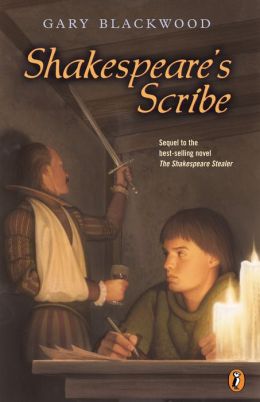
Author: Gary Blackwood
Publisher: Penguin, 2000
Reviewed by: Ralph Bielenberg

Author: Gary Blackwood
Publisher: Penguin, 2000
Reviewed by: Ralph Bielenberg
Shakespeare’s Scribe continues the adventures of Widge , the orphan whom
we met in Gary Blackwood’s earlier novel, The Shakespeare Stealer. We
follow Widge’s first-person narrative of the author’s conjecture of the 16thcentury
theater life, from the writing and rehearsing through to the performance. The
troupe has become this teenager’s true family.
Mr. Blackwood does not aspire to historical accuracy, but the flavor of backstage dressing room flutter before an afternoon performance is very real: boys and men becoming actresses, actors’ needles making last-minute alterations for an understudy, rivalries surfacing between apprentice actors, and the audience clamoring for the play to begin.
There is a plague this
summer in London, and the theatre are closed by the Queen’s decree. The
Chamberlain’s men decide to transport their operations into the provinces where
laws are less strict. Drenched by rain they plod along on foot and horseback
ankle-deep in mud. They are held up by bandits, and have their wagons torches
by a rival troupe. Treated as vagabonds, one town even forbids them to enter.Mr. Blackwood does not aspire to historical accuracy, but the flavor of backstage dressing room flutter before an afternoon performance is very real: boys and men becoming actresses, actors’ needles making last-minute alterations for an understudy, rivalries surfacing between apprentice actors, and the audience clamoring for the play to begin.
The story deepens when
Widge chances to meet a man who claims to be his father and who travels along
until he is accused of stealing their meager earnings. As the summer goes
along, beautiful truths are expressed about life, love, friendship. Widge comes
to learn that you are what you make yourself, not what your parents are.
And without parents this
is not easy. But at the end, Widge comes to understand: “Though I was as
uncertain of my origins as I had been when we set out on the tour, I had not
gone through all the trials of the past few months without learning something
about who I was and what I was capable of. I had learned that, when the
occasion demanded it, I could push aside my fears in order to aid a friend that
I could mend a broken arm or a broken head that I could take up a sword in
defense of someone I cared for.”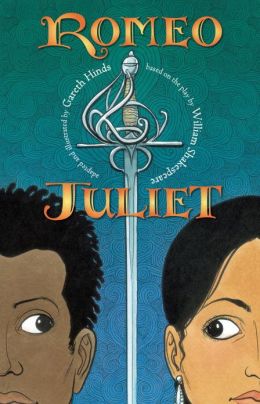
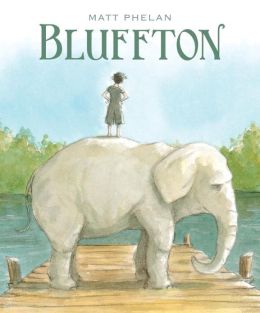
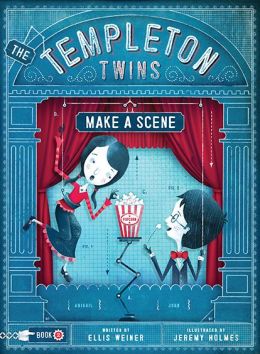
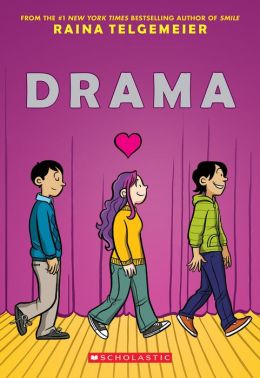
No comments:
Post a Comment